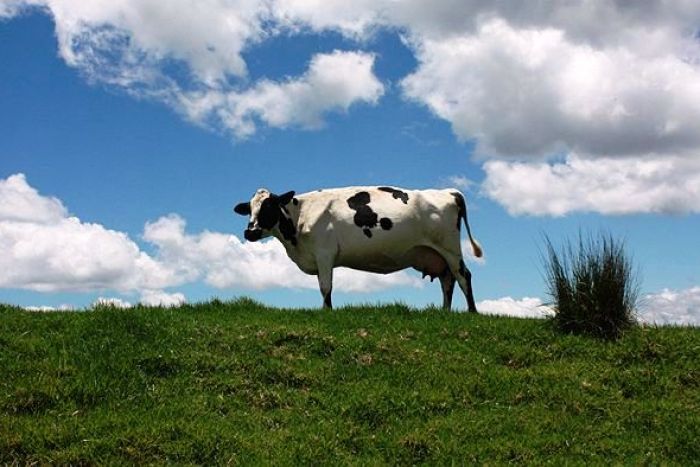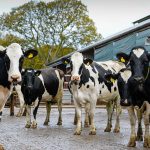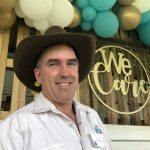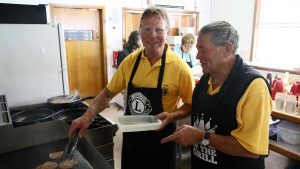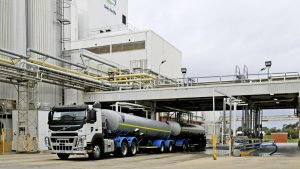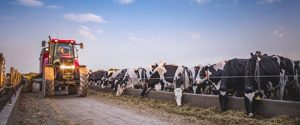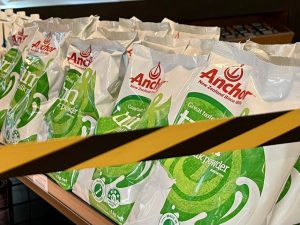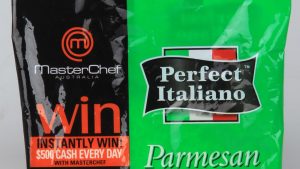
WA Dairy and Energy (WADE) plans to build a 24,000 head free stall dairy south of Badgingarra, in the state’s Mid West region, which would produce 30,000 tonnes of powdered milk per annum.
WADE CEO Ian Thubron said due to the project’s large water requirements for feed production, and the depth of the aquifer at Badgingarra, a self-sufficient and cheaper source of power was needed — effluent.
“Effectively, a pure dairy business becomes a dairy energy and cropping business,” he said.
“In terms of economic viability, producing high-quality Western Australian infant milk formula for export, we think that’s a really powerful model.”
Mr Thubron said a definitive feasibility study was yet to be completed, but a positive pre-feasibility study on the $1.2b project had spurred WADE and its backer, Tsing Capital Australia, to push forward with the plan.
1
WADE’s plan to build a dairy at Badgingarra would work on a closed loop operating system. (Supplied: WADE)
Baby formula target market
Mr Thubron said the milk produced at the operation would be processed into formula onsite and exported to Asian markets.
He did not view the project as potential competition to the domestic-focussed WA dairy industry.
“Essentially we will receive the milk, we will process it into the branded infant milk product, and that will then be exported through one of the ports or airports available to us,” Mr Thubron said.
“We are looking at producing all of our product for export.
“So, whilst our primary production point might be slightly higher, we add value through processing and branding for export.”
Concerns for domestic producers
South West dairy consultant Steve Hossen said service providers to the contracting WA dairy industry would benefit from such a large dairy enterprise, but he said it posed a risk to any price hikes the existing dairy industry may benefit from.
“We’ve got predominately a domestic market, and that market runs up when milk is short in the state,” he said.
“If that market runs up, and the price goes up … think of yourself as a processor sourcing milk more expensive than this supplier who is 250 kilometres out of Perth, that milk at times will make its way into the domestic market.
“We need to have those runs up in price to help cover the difficult phases we get.
“What it will do is it will cap the time and strength of those upward prices.”
Water licence essential
WADE has the option to purchase two properties near Badgingarra and is currently drilling for water in the area after being granted a 26D licence from the WA State Government.
Mr Thubron said a large volume of water was needed for the project, and a successful application for groundwater access was crucial for the project to go ahead.
“The Yarragadee sub-aquifer is not taken at the moment because the water is too deep to be economically viable to take,” he said.
“We are looking at somewhere over 10 gigalitres, but that will have to be determined based on what the hydro-geological report.”
Water licences in WA are assessed under the Rights in Water and Irrigation Act 1914, which operates on a first in, first served basis.
Hundreds of ongoing jobs
Mr Thubron said WADE had identified Badgingarra as a suitable location for the venture following a 2012 State Government report into building the dairy industry.
“The reason they determined the Mid West was because of the climate being suitable for the cows, the availability of water, the Brand Highway, the Bunbury Dampier gas pipeline, high-voltage power and so on,” he said.
If the project goes ahead, Mr Thubron said it would create 480 ongoing jobs, and 950 construction jobs.
The next steps include community consultation and a definitive feasibility study, but Mr Thubron hoped earth could be turning on the site as soon as the end of the year.
“It is a very long-term project,” he said.
“You can’t suddenly create a herd of 20,000 cows and barns and start producing, so the whole thing will be phased over a three to four year period.
“We will have phases the will come online during the course of the project, so by the time we get to 2024 when we’ve completed it, we will have started producing over that period of time.
“So it’s very exciting, but there’s certainly a long way to go.”
Free stall dairy model
The project plans to have 20,000 head of cattle milking by 2024 using a free stall system.
“Our cows are born and grow up in paddocks, at about two years they come into the free stall barn,” Mr Thubron said.
“Within the barn they have access to food, water, shelter and bedding, and outside the barn they have access to the irrigated pivot areas.
“The core mantra we have is doing right by the cow.
“That’s partly integrity, partly an ethical and an animal welfare concern, but also an economic one — a happy, healthy cow is a more productive cow.”
Mr Thubron said WADE’s animal welfare policy had received feedback and recommendations from the RSPCA.
